We need your consent to use the individual data so that you can see information about your interests, among other things. Click "OK" to give your consent.
ASTM D6338-10
Standard Classification System for Highly Crosslinked Thermoplastic Vulcanizates (HCTPVs) Based on ASTM Standard Test Methods
STANDARD published on 1.8.2010
The information about the standard:
Designation standards: ASTM D6338-10
Note: WITHDRAWN
Publication date standards: 1.8.2010
SKU: NS-34729
The number of pages: 6
Approximate weight : 18 g (0.04 lbs)
Country: American technical standard
Category: Technical standards ASTM
The category - similar standards:
Annotation of standard text ASTM D6338-10 :
Keywords:
dynamic vulcanization, highly crosslinked thermoplastic vulcanizate, line callout, thermoplastic elastomer, thermoplastic vulcanizate, Classification (standards)--plastics, Crosslinking, HCTPVs (highly crosslinked thermoplastic vulcanizates), Line call-out specifications--plastics, Thermoplastic elastomers (TPE), Thermoplastic vulcanizate, Vulcanization characteristics, ICS Number Code 83.080.20 (Thermoplastic materials)
Additional information
| 1. Scope | ||||||||||||||||||||||||||||||||
|
1.1 This classification system covers highly crosslinked thermoplastic vulcanizates (HCTPVs) for extrusion, molding and other fabrication methods. HCTPVs are thermoplastic elastomers (TPEs) consisting of two or more polymer systems at least one of which is rubbery and highly (>95 %) crosslinked and at least one of which is thermoplastic, with each system having its own phase. The thermoplastic phase will tend to be continuous and the rubbery phase discontinuous. The high level of crosslinking and ultrafine particle size (ca 1 μm diameter) of the rubbery phase give rise to properties more closely approaching those of conventional thermoset rubber, when compared to the same thermoplastic/rubbery polymer composition with a lower level (≤95 %) of crosslinking. The HCTPV polymer compositions may contain fillers, reinforcing agents, plasticizers, resins, antidegradants, colorants and other beneficial constituents. Recycled HCTPVs are not covered in this classification system. 1.2 Included in this classification system are the properties necessary to identify the respective compositions. For specialized applications, other requirements may be needed to identify specific characteristics. 1.3 As given in , values in SI units are to be regarded as standard. Note 1—There is no known ISO equivalent to this standard. 1.4 This standard is based on testing completed in accordance with ASTM standard test methods. 1.5 The following safety hazards caveat pertains only to the test methods portion, Section 12, of this classification system. This standard does not purport to address all of the safety problems, if any, associated with its use. It is the responsibility of the user of this standard to establish appropriate safety and health practices and determine the applicability of regulatory limitations prior to use. |
||||||||||||||||||||||||||||||||
| 2. Referenced Documents | ||||||||||||||||||||||||||||||||
|
Similar standards:
Historical
1.8.2012
Historical
1.9.2008
Historical
1.8.2012
Historical
1.3.2014
Historical
1.3.2014
Historical
15.11.2009
We recommend:
Updating of laws
Do you want to be sure about the validity of used regulations?
We offer you a solution so that you could use valid and updated legislative regulations.
Would you like to get more information? Look at this page.


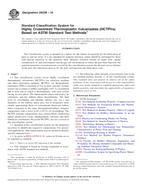
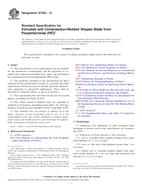 ASTM D7293-12
ASTM D7293-12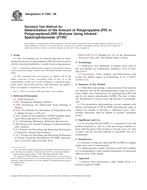 ASTM D7399-08
ASTM D7399-08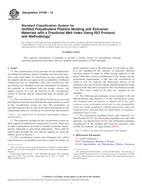 ASTM D7436-12
ASTM D7436-12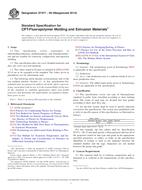 ASTM D7471-09(2014)..
ASTM D7471-09(2014)..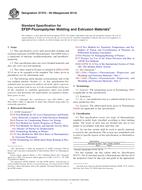 ASTM D7472-09(2014)..
ASTM D7472-09(2014)..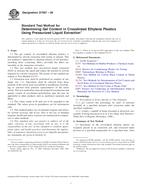 ASTM D7567-09
ASTM D7567-09
 Cookies
Cookies
